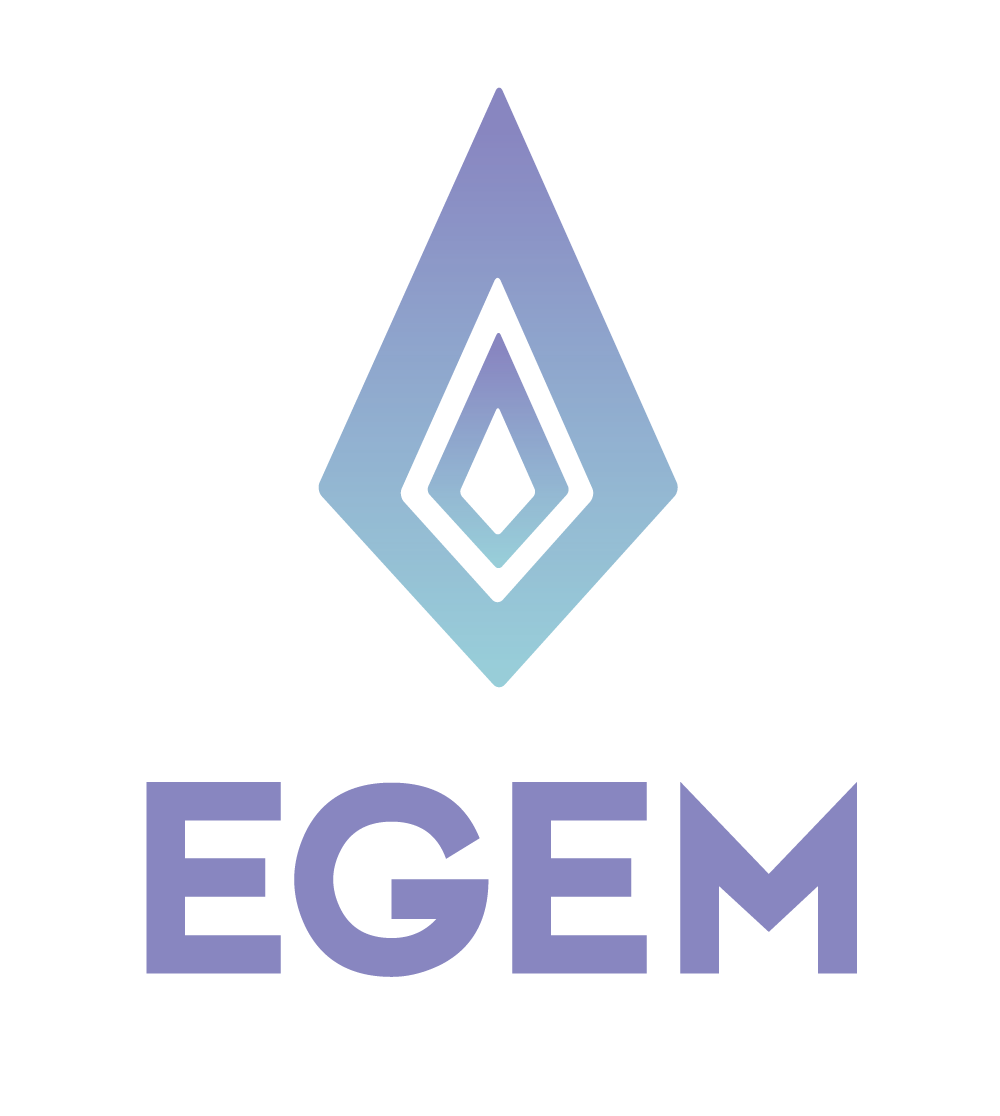BlockDAG’s recent $321 million raise showcases the digital asset space’s incredible potential. This success highlights the growing interest in innovative blockchain solutions.
Creating digital currency is simpler than you might think. I’ve worked with blockchain tech for years. The eGem ecosystem has caught my eye, especially after these fundraising numbers.
This guide shares my hands-on experience in building blockchain assets. We’ll explore technical requirements, development tools, and effective strategies.
This tutorial combines practical knowledge with current market insights. It’s designed for developers and entrepreneurs alike. You’ll gain the skills needed to succeed in the cryptocurrency world.
Key Takeaways
- BlockDAG’s $321 million raise demonstrates the massive potential in well-executed blockchain projects
- Creating digital assets is more accessible than most people realize with the right guidance
- Technical requirements and development tools are clearly outlined in this hands-on guide
- Real-world strategies based on actual market experience provide practical value
- Both developers and entrepreneurs can benefit from this comprehensive approach
- Current market trends show significant investor interest in innovative blockchain solutions
Introduction to eGem Crypto Token
eGem offers a unique approach in the crowded crypto market. The platform balances technical sophistication with practical usability. It stands out through its innovative token standards and consensus mechanisms.
Token creation projects have seen remarkable growth, with some achieving over 1,300% returns. This expansion has created opportunities and challenges for developers seeking reliable platforms.
What is eGem?
eGem is a blockchain platform that prioritizes security and scalability. It uses a unique consensus mechanism that solves many network issues.
The platform supports multiple token standards, giving developers flexibility in project structure. I’ve personally tested their toolkit and found it streamlined compared to alternatives.
eGem combines technical rigor with user-friendly design. The development environment is intuitive, even for creators new to blockchain.
The Importance of eGem in the Crypto Market
The cryptocurrency landscape is highly competitive. Serious projects need solid foundations, which eGem provides with enterprise-grade reliability and accessibility.
Successful token projects share common traits: robust technology, clear use cases, and strong community adoption. eGem addresses these areas through its comprehensive token standards implementation.
Platforms supporting diverse token standards attract more long-term projects. This versatility is crucial as regulatory frameworks evolve and market demands shift.
Overview of Crypto Token Creation
Creating cryptocurrency tokens involves several critical steps. The process requires understanding smart contracts, choosing token standards, and implementing security measures.
Modern platforms like eGem have simplified token creation significantly. The key is finding the right balance between ease of use and technical control.
Successful token creators follow a structured approach. They plan tokenomics, select standards, develop smart contracts, and conduct thorough testing.
Understanding these fundamentals is essential before starting development. The next sections will explore the technical foundations of blockchain token creation.
Understanding Blockchain Technology
Blockchain technology isn’t as complex as it seems. It’s like a shared notebook with identical copies. Everyone must agree before adding new entries. This system forms the basis for token creation.
What is Blockchain?
Blockchain is a digital ledger system storing information across multiple computers. Each block contains transaction data, timestamps, and a unique hash. These blocks link chronologically, forming an unbreakable chain of records.
The trust factor makes blockchain special. No single entity controls the system. Network participants validate transactions collectively, eliminating the need for traditional intermediaries.
How Blockchain Works
The process begins when someone initiates a transaction. It’s broadcast to the network of computers called nodes. These nodes verify the transaction using predetermined rules and algorithms.
Verified transactions are bundled into a new block. Network participants compete to solve a puzzle to add this block. The winner gets rewarded, and the new block becomes permanent.
Smart contracts are self-executing contracts with coded terms. They automatically execute when specific conditions are met. This enables automated processes for token distribution and complex trading mechanisms.
Key Benefits of Blockchain for Tokens
After working with various blockchain projects, including those using advanced mining pools, I’ve identified several key advantages:
- Transparency: Every transaction is publicly verifiable on the blockchain
- Immutability: Once recorded, data cannot be altered or deleted
- Decentralization: No single point of failure or control
- Programmability: Smart contracts enable complex automated functions
- Global accessibility: Anyone with internet access can participate
The real power comes from combining these benefits. Your token inherits blockchain’s security and transparency. Smart contracts handle complex operations automatically. This creates a trustless environment without central authorities.
Understanding these basics provides a foundation for successful token creation. The technical aspects may seem daunting at first. However, the core concepts become clear once you grasp how everything fits together.
Prerequisites for Creating eGem Tokens
Creating eGem tokens needs specific skills and tools. You don’t need to be a coding expert. But, you should understand what you’re getting into.
Token creation is like building a house. You need blueprints, tools, and basic knowledge. Preparation is key to success.
Technical Skills Required
Programming knowledge forms the backbone of successful token development. Learn Solidity programming for creating smart contracts on blockchain networks. Don’t worry if you’re new to this.
Focus on these areas first:
- Basic programming concepts and logic
- Understanding of object-oriented programming
- Familiarity with JavaScript (it helps with the transition)
- Knowledge of blockchain fundamentals
The learning curve isn’t too steep. Solidity programming is similar to C++ or JavaScript. Spend a few weeks learning the syntax before creating tokens.
Essential Tools and Software
Your development environment is crucial. These tools consistently deliver results:
- Visual Studio Code – My go-to editor with excellent Solidity extensions
- Node.js – Essential for package management and running development scripts
- Ganache – Creates a local blockchain for testing without spending real cryptocurrency
- Git – Version control is non-negotiable when working with smart contracts
- MetaMask – Browser wallet for interacting with your tokens during development
The eGem platform offers additional resources to streamline the process. These tools work well with standard development workflows.
Understanding Smart Contracts
Smart contracts are the heart of your token. They define how your token behaves and its special features.
Writing functional code is just the start. Consider gas optimization, security, and user experience. Many projects fail by ignoring these aspects.
Key areas to master include:
- Contract security best practices
- Gas optimization techniques
- Error handling and edge cases
- Upgrade patterns and contract maintenance
Smart contracts are permanent once deployed. There’s no “undo” button in blockchain development. Thorough testing prevents costly mistakes later.
Step-by-Step Guide to Creating eGem Tokens
Let’s explore how to turn your token idea into a working eGem smart contract. This process needs careful planning and execution. I’ve created many erc20 tokens, learning something new each time.
The process has three main phases. Each phase builds on the last one. Here’s the approach that has worked well for me.
Setting Up Your Development Environment
Your dev environment is key to success. I always start fresh to avoid issues. eGem offers tools that simplify this setup.
First, get the eGem SDK from their official site. It has everything you need. Make a new folder for your project to stay organized.
Set up your local testnet connection next. It’s like the main network but without real money risk. This lets you test your erc20 tokens safely.
Install Node.js and npm if you haven’t. They manage dependencies and run scripts. Use the latest stable version for best results.
Connect your wallet to the eGem testnet. You’ll need test tokens for development. Get free ones from the eGem faucet.
Writing and Deploying Smart Contracts
Smart contracts need tech skills and creative thinking. I start with eGem’s basic erc20 tokens template. It has standard functions like transfer and balance checking.
Define your token’s properties first. Choose a good name and symbol. Set the total supply carefully – you can’t change it later.
Core functions handle token transfers. Add custom features slowly, testing each one. Common additions include burn functions and staking features.
Testing is crucial – test everything. Try different scenarios on the testnet. Check edge cases like zero transfers or supply limits.
Compile your contract using eGem tools. Review the output carefully for warnings or errors. Deploy to testnet first to mimic mainnet without risk.
Verifying Your Token
Contract verification builds trust in your project. It makes your code public on the eGem explorer. Verified contracts often get more user attention.
You’ll need your source code and compiler settings. Keep good records during development. Upload your code to the eGem explorer system.
Use the exact compiler version and settings from deployment. Any difference will cause verification to fail. I use a checklist to track these details.
Verified contracts are fully transparent. Users can read your code and understand how it works. This often leads to more trust and adoption.
| Development Phase | Key Actions | Time Investment | Success Indicators |
|---|---|---|---|
| Environment Setup | Install SDK, configure testnet, prepare wallet | 2-4 hours | Successful testnet connection, funded wallet |
| Contract Development | Write code, implement features, conduct testing | 1-3 weeks | Clean compilation, passing all tests |
| Deployment Process | Deploy to testnet, then mainnet, monitor transactions | 4-8 hours | Confirmed deployment, functioning contract |
| Verification Steps | Submit source code, confirm compiler settings | 1-2 hours | Verified status on blockchain explorer |
Document everything as you go. Good notes help with updates and team collaboration. I record design choices, test results, and deployment details.
Take your time with each step. Rushing often causes more problems later. Patience will help your erc20 tokens succeed.
Statistical Insights into Token Creation
The token creation ecosystem has evolved rapidly. The numbers reveal genuine innovation in cryptocurrency development. This innovation is reshaping how digital assets are created and used.
Recent market analysis shows impressive growth patterns. The diversity of successful approaches continues to surprise even seasoned developers.
Current Trends in Crypto Token Production
The cryptocurrency development landscape shows remarkable diversity in project approaches. Recent market data reveals unprecedented growth in token creation across multiple sectors.
The range of successful strategies is striking. Some projects focus on utility and enterprise adoption. Others target specific niches with precision.
The meme coin sector deserves attention. Data shows potential returns exceeding 1,300% for well-positioned tokens. This represents genuine market demand for community-driven projects.
Market Statistics on eGem Tokens
eGem’s platform statistics show steady growth in token deployments. Developers appreciate the balance between functionality and ease of use. The platform has processed thousands of token creations since launch.
The retention rate is particularly encouraging. Projects built on eGem maintain active development longer than industry averages. This suggests the platform attracts serious developers rather than quick-flip speculators.
Projects like BlockDAG achieving over $321 million show the potential of well-executed token launches. These success stories validate thoughtful cryptocurrency development approaches.
Predictions for Future Token Growth
Several factors suggest continued expansion in token creation. Institutional adoption is accelerating, with major firms launching new crypto products regularly.
Development tools are improving rapidly. Complex blockchain tasks are becoming accessible to traditional programmers. This democratization of cryptocurrency development will likely drive sustained growth.
However, market volatility remains a concern. Building tokens with genuine utility is key. Projects with strong technical foundations consistently outperform speculative plays over time.
Looking ahead, expect growth in utility-focused tokens. The market is maturing beyond speculation toward practical applications that solve real problems.
Tools and Resources for Token Developers
Your toolchain can make or break your token development success. The right blockchain platforms and resources can lead to a smooth eGem token launch. Choosing wisely from the start can save you from months of debugging headaches.
Developers often struggle with basic setups when better options exist. The right tools, templates, and support can halve your development time. They also help reduce costly mistakes along the way.
Recommended Development Platforms
The eGem SDK is your starting point, but don’t stop there. Hardhat has become my go-to choice for smart contract development and testing. It catches errors that other tools might miss.
eGem offers unique advantages over Ethereum and Polygon. It provides specific features without the high gas costs that can hurt smaller projects. The development process is also more streamlined on eGem.
- Hardhat – Superior testing and deployment capabilities
- Remix IDE – Quick prototyping and contract verification
- MetaMask – Essential for testing transactions
- Ganache – Local blockchain testing environment
Templates and Libraries for Token Creation
eGem outshines other platforms with its template library. It offers pre-built contracts for common use cases that work in real-world situations. These templates have been my starting points for several projects.
- Basic token contracts with standard functions
- Staking mechanisms with reward calculations
- Governance systems for community voting
- Multi-signature wallet implementations
These templates saved me weeks of development time on my recent projects. You’re getting more than just code. These are tested implementations that handle unexpected situations.
Community Resources and Support
Technical docs are helpful, but real problem-solving happens in community spaces. Developers share their experiences and solutions there. The eGem Discord has been crucial for my work.
Active developers discuss challenges you’ll face before they even occur. Stack Overflow’s eGem section grows daily with practical answers. GitHub repos are also great for learning best practices from real code.
Official docs cover the basics well. Community examples fill in gaps that formal docs might miss. This mix creates a complete learning ecosystem for developers.
Marketing Your eGem Token
Effective marketing can make or break your eGem token project. Many great technical projects fail due to poor community building. Your tokenomics design impacts your marketing strategy directly. Your tokenomics design directly impacts your marketing strategy.
Community engagement often outweighs technical perfection in today’s market. Projects that deliver value and communicate consistently build stronger followings. This approach works better than relying on flashy promotions alone.
Strategies for Promoting Your Token
Clear documentation is crucial for promoting your eGem token. Users need to understand your token’s purpose and importance. Explaining your token’s utility in simple terms generates more genuine interest than complex jargon.
Build trust through transparent communication about your project’s goals. Share regular updates on progress, even when facing challenges. The crypto community values honesty over polished marketing speak.
Focus on education rather than hype in your promotional approach. Here’s what works:
- Create detailed guides explaining your token’s specific use cases
- Share behind-the-scenes development insights
- Highlight real-world applications and benefits
- Address common questions before they’re asked
Sustainable growth beats viral moments that don’t convert to long-term users. Build your strategy around consistent value delivery instead of short-term attention grabs.
Building a Community Around eGem
Community building requires patience and authenticity. Many token creators underestimate these qualities. Your tokenomics should support engagement through features like governance voting or staking rewards.
Host regular AMAs to maintain direct communication with your community. These sessions help address concerns and share updates. They also show your commitment to the project’s long-term success.
Cross-promotion often works better than building in isolation. Engage with other eGem ecosystem projects and contribute to broader token development discussions.
Here are proven community-building tactics:
- Create educational content about your specific use case
- Reward early adopters and active community members
- Establish clear communication channels and response times
- Share your project’s roadmap and stick to announced milestones
Building genuine relationships takes time, but these connections form successful token projects’ backbone. Focus on quality engagement over quantity of followers.
Leveraging Social Media Effectively
Prioritize education and transparency in your social media strategy. Different platforms serve different purposes in your marketing ecosystem. Use each one wisely.
Twitter is great for quick updates and industry engagement. Share progress and answer community questions. Consistency matters more than frequency – regular, valuable posts outperform sporadic promotional bursts.
Discord and Telegram excel for community building and direct communication. These platforms allow real-time discussions about your project’s details.
LinkedIn can help reach institutional investors and serious crypto enthusiasts. Share longer content about your project’s business applications and market potential.
Track your social media performance using these key metrics:
- Engagement rates on educational content versus promotional posts
- Community growth and retention rates
- Conversion from social media followers to actual token holders
- Quality of discussions and questions from your audience
Balance promotional content with genuine value delivery on social media. Your audience can spot the difference between authentic updates and empty hype.
FAQs about eGem Crypto Token
Creating tokens raises common questions from new developers. The crypto space evolves rapidly, but core challenges remain consistent. Most issues have simple solutions once you know where to look.
I track recurring problems to spot patterns. This helps during consultations and troubleshooting. The main categories involve technical issues, regulatory compliance, and tokenomics decisions.
Common Questions from Token Creators
New creators often underestimate gas fees and deployment costs. You’ll need enough ETH to cover deployment. Costs range from $50 to $500 depending on network traffic.
Tokenomics design is another frequent concern. Creators wonder about token supply and distribution strategies. I advise focusing on long-term utility and community growth, not quick profits.
Smart contract verification issues are common too. Developers struggle with Etherscan verification. Usually, it’s a mismatch in compiler settings or constructor parameters.
- Gas estimation errors during deployment
- Contract compilation failures
- Token distribution and supply decisions
- Wallet integration problems
- Network configuration issues
Troubleshooting Token Creation Issues
Most technical problems stem from environment setup mistakes. Check your MetaMask connection and network selection before deploying.
Compilation errors often point to simple syntax issues. Look for missing semicolons, incorrect function visibility, or outdated pragma statements.
Deployment failures can happen due to low gas limits. Increase the gas limit by 20-30% above the estimate. It costs more but prevents failed transactions.
Contract interaction problems usually involve function call formatting. Ensure proper data types and decimal handling for token amounts.
Understanding Regulatory Compliance
Regulatory questions are increasingly common. The landscape changes, but transparency and proper disclosure remain crucial.
Initial coin offerings raise concerns about securities classification. Tokens representing ownership may qualify as securities. This triggers additional registration requirements.
Geographic restrictions add complexity. Some areas ban certain token activities. Others require specific licenses. Research target markets and consider excluding problematic regions.
Detailed documentation is essential. Keep records of development, marketing, and token distribution. Regulators appreciate clear paper trails when questions arise.
Tax implications vary by jurisdiction and token structure. Utility tokens face different rules than investment tokens. Seek professional tax advice as your project grows.
The regulatory landscape will keep evolving. Build flexibility into your token design. This helps you adapt to new requirements without major changes.
Conclusion and Next Steps
Creating your eGem token is your first step into the crypto world. This guide breaks down the process into manageable steps. From blockchain basics to smart contract deployment, you’ve learned essential skills.
Recap of the eGem Token Creation Process
We covered blockchain fundamentals and setting up development environments. We then moved on to writing and deploying smart contracts. Each step builds on the previous one, enhancing your technical skills.
Practice improves your speed and efficiency. My first token deployment took much longer than recent ones.
Future Opportunities in Crypto Tokens
The crypto landscape offers endless possibilities for developers and entrepreneurs. New use cases emerge regularly, and institutional adoption keeps growing. Focus on solving real problems instead of chasing market trends.
Final Thoughts on eGem Tokens
eGem balances functionality and accessibility well. It’s suitable for both beginners and experienced developers. Success in decentralized finance requires persistence and genuine innovation.
Your token creation journey begins now. Build value for your community and stay committed to improvement.





